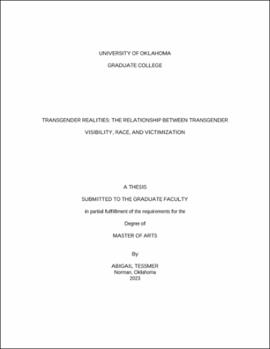| dc.description.abstract | For years, gender scholars and activists have agreed that transgender individuals in the United States face overwhelming systemic oppression as well as high rates of violence and victimization. However, few studies have evaluated the level at which the perceived gender non-conformity of one’s transgender identity is a marker of stigma visibility on its own which may contribute to more frequent victimization. This is imperative to investigate as experiencing frequent victimization can lead to a host of negative health and life outcomes for trans and non-binary individuals. Thus, it is important to understand the intricacies of transgender victimization to further find and promote mitigating resources. In this study, I examine the possible effects of transphobic victimization through the minority stress model and the weathering hypothesis which are frameworks that illustrate the long-term social costs of inhabiting intersecting and visibly stigmatized identities. Specifically, I use data from the 2015 U.S. Transgender Survey (N=26,388) to examine how trans visibility is related to verbal harassment, physical abuse, and sexual assault respondents face. I also investigate how gender, race, and transition status (surgical and physical) intersect to complicate this relationship. Findings shows that visibly trans respondents are more likely to experience verbal harassment, physical abuse, and sexual assault, regardless of interactions with gender, race, and transition status. In addition, those who have had any surgeries still suffer from high predicted probabilities of experiencing verbal harassment in a similar pattern to those who have not had any surgical transitions. The only exception lies with trans women who have experienced sexual assault in the past year. These analyses provide important insight to the social costs that still exist for individuals who are perceived as straying away from the binary gender system. | en_US |
